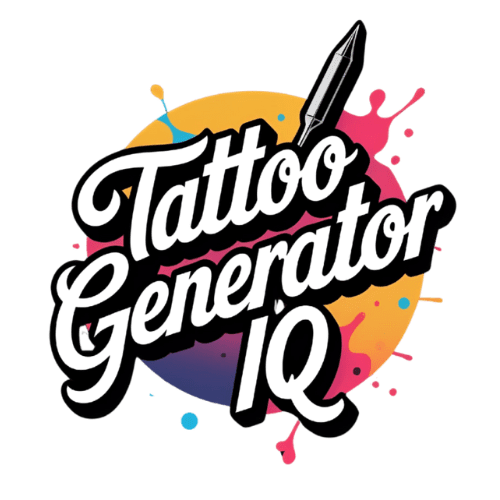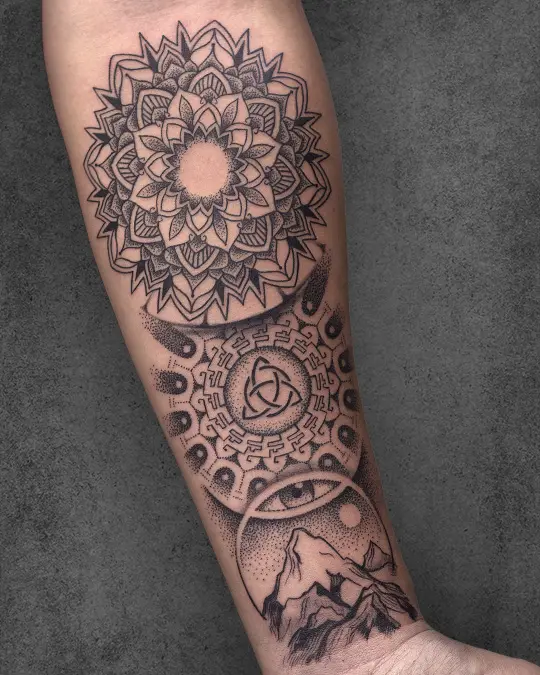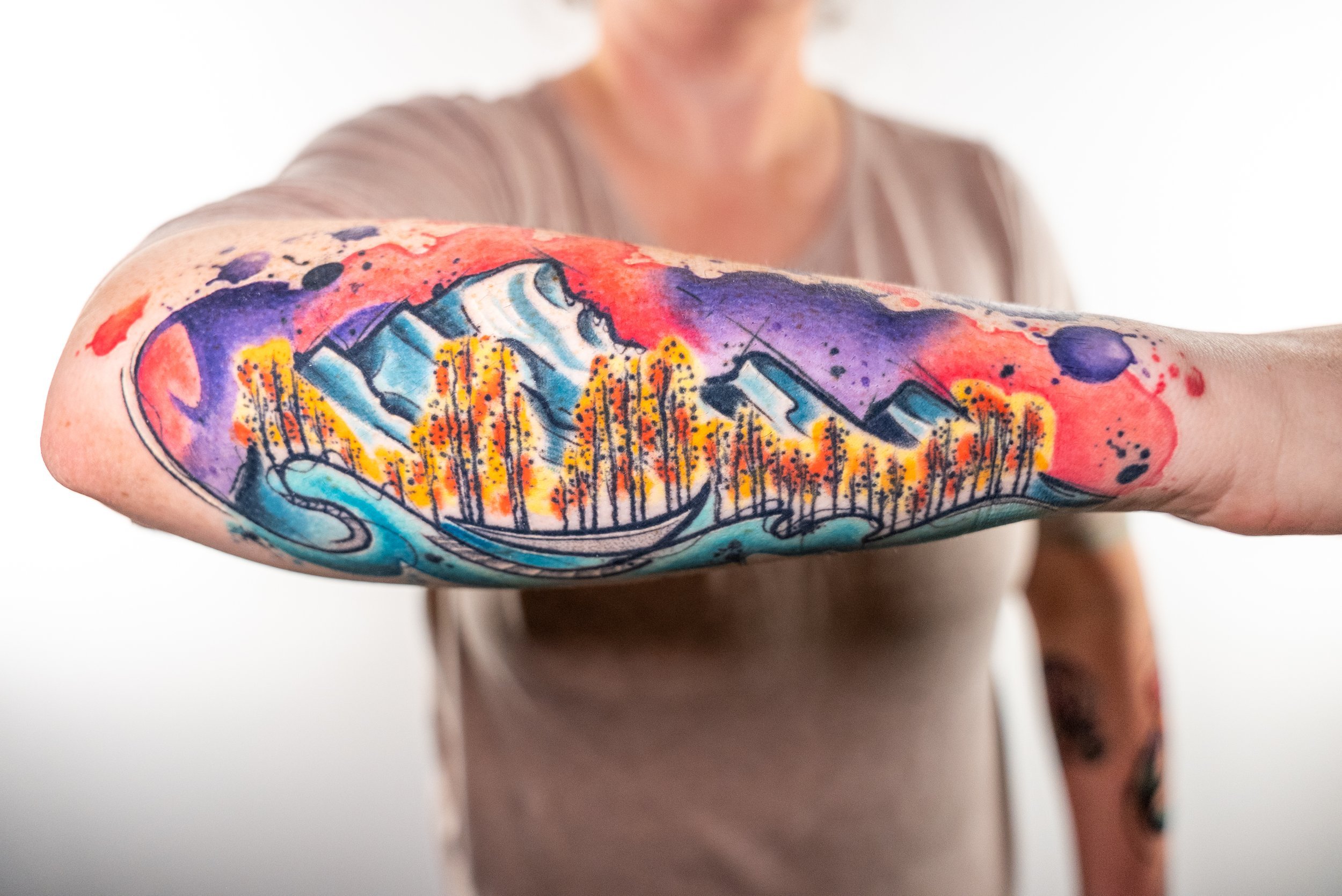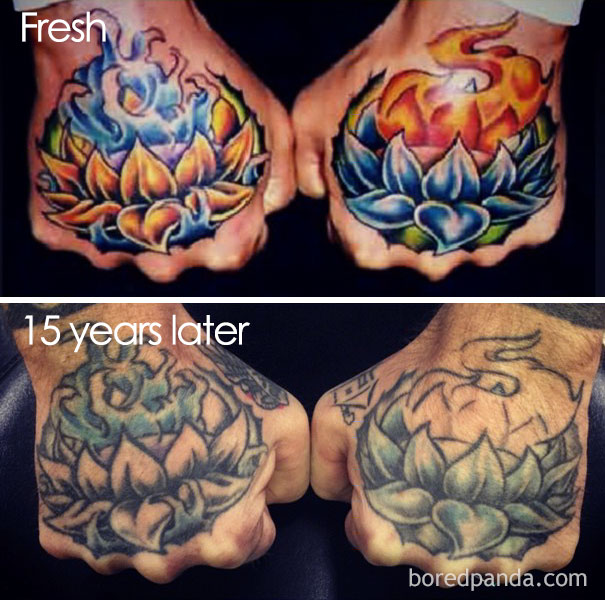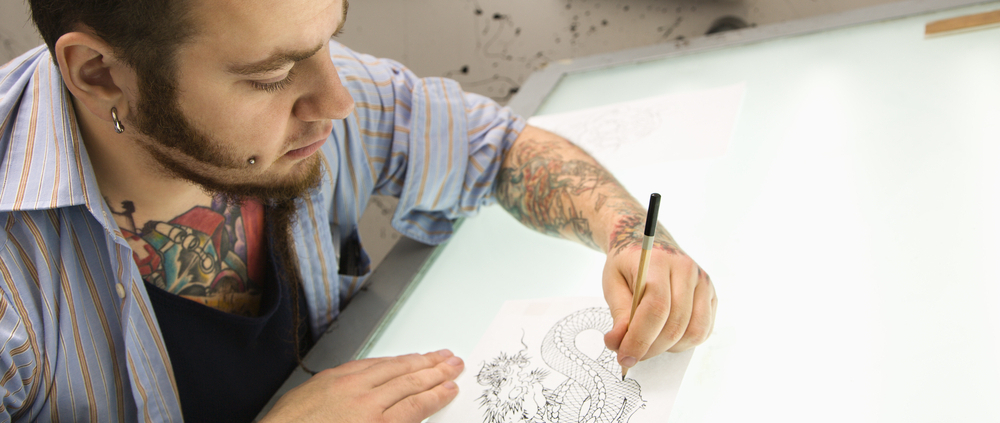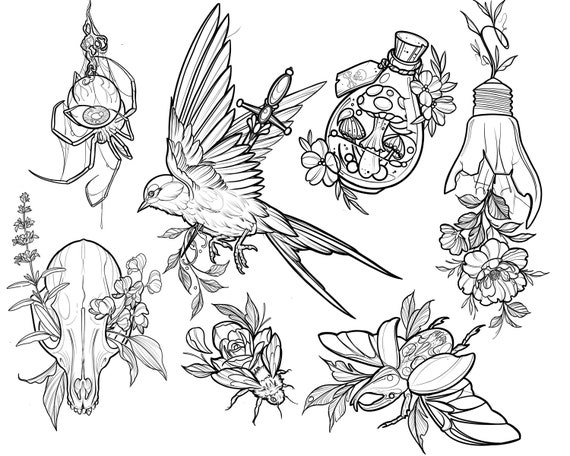25 Stunning Drawn Tattoo Ideas That Will Transform Your Next Ink Session
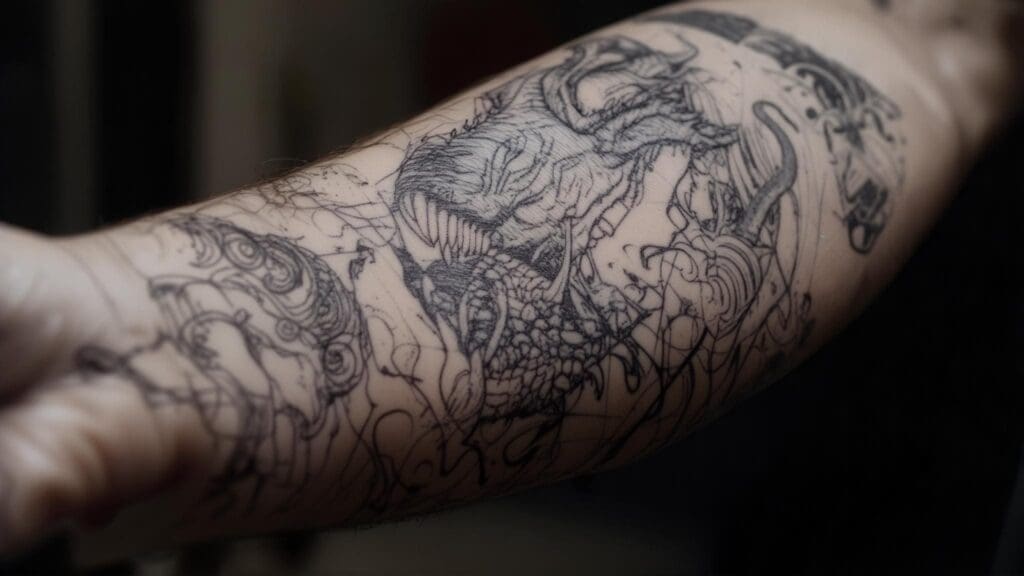
Recent industry data shows that 76% of tattoo enthusiasts spend over three months researching design ideas before booking their appointment. I remember spending countless hours scrolling through Pinterest boards and Instagram feeds, feeling overwhelmed by endless options yet unable to find that perfect design that truly spoke to me.
The struggle of design selection is incredibly common among tattoo enthusiasts. We often find ourselves caught between wanting something meaningful and worrying about making the wrong choice for permanent body art. This comprehensive guide breaks down 25 exceptional drawn tattoo ideas across five distinct categories, providing you with the detailed insights needed to make an informed decision about your next piece of body art.
I’ve organized this content to address the overwhelming nature of tattoo design research with clear categorization and detailed analysis. Each design comes with practical considerations that will help you move from endless scrolling to confident decision-making.
Table of Contents
-
Essential Factors for Selecting Your Perfect Drawn Tattoo Design
-
Nature & Wildlife Drawn Tattoo Inspirations (Ideas 1-5)
-
Geometric & Abstract Artistic Expressions (Ideas 6-10)
-
Cultural & Symbolic Design Heritage (Ideas 11-15)
-
Portrait & Realistic Artistic Mastery (Ideas 16-20)
-
Modern & Minimalist Contemporary Styles (Ideas 21-25)
-
How Each Design Measures Against Critical Selection Criteria
-
Transforming Your Vision Into Reality With Professional Tools
-
Final Thoughts
Essential Factors for Selecting Your Perfect Drawn Tattoo Design
Before diving into specific design options, understanding seven key evaluation criteria ensures you’ll choose a tattoo that aligns with your lifestyle, aesthetic preferences, and long-term satisfaction. These considerations include design complexity, placement requirements, personal symbolism, style compatibility, artist skill needs, aging characteristics, and cultural appropriateness.
A systematic approach to tattoo selection prevents impulsive decisions that lead to regret. I’ve seen too many people rush into tattoo decisions based purely on aesthetic appeal, only to realize later that they didn’t consider practical factors. Each criterion directly impacts tattoo success, from initial execution through decades of wear, ensuring comprehensive decision-making process.
The framework I’m sharing covers everything from technical execution requirements to personal meaning considerations. This comprehensive approach helps you evaluate tattoo drawings from multiple angles, ensuring your final choice aligns with both your immediate desires and long-term satisfaction goals.
|
Selection Criteria |
High Priority |
Medium Priority |
Low Priority |
|---|---|---|---|
|
Design Complexity |
Simple, bold lines |
Moderate detail work |
Highly complex, photorealistic |
|
Placement Flexibility |
Works on multiple body areas |
Limited to specific areas |
Requires exact placement |
|
Artist Skill Required |
Beginner to intermediate |
Intermediate to advanced |
Master level only |
|
Aging Characteristics |
Maintains clarity 20+ years |
Good aging 10-15 years |
May require touch-ups 5-10 years |
|
Cultural Sensitivity |
No cultural concerns |
Minor research needed |
Extensive cultural research required |
|
Personal Meaning |
Deep personal significance |
Moderate connection |
Aesthetic appeal only |
|
Budget Impact |
Single session, moderate cost |
2-3 sessions, higher cost |
Multiple sessions, premium pricing |
Design Complexity and Detail Requirements
Complexity levels range from simple single-line drawings to intricate photorealistic masterpieces, with each level requiring different time investments, artist expertise, and financial commitments. Simple designs offer versatility and superior aging characteristics, while complex pieces provide stunning visual impact but demand exceptional artistic skill and multiple sessions.
The relationship between complexity and practical considerations is direct and significant. More complex tattoo drawings require longer sessions, higher costs, and specialized artist expertise. Simple designs typically age better over decades due to bold lines and clear contrast, while complex details may blur or fade without proper execution and care.
For those just starting their tattoo journey, exploring simple tattoo ideas can provide excellent foundation designs that age beautifully while offering room for future expansion.
Real-World Complexity Example: Sarah wanted a realistic portrait of her grandmother but had a limited budget of $500. After consulting with three artists, she learned that a quality portrait would require 3-4 sessions totaling $1,200-1,500. Instead, she chose a simplified line art interpretation of her grandmother’s silhouette with a meaningful quote, achieving personal significance within her budget while ensuring excellent long-term aging.
Strategic Placement and Size Considerations
Your chosen body location dictates design possibilities, with curved areas favoring flowing organic designs and flat surfaces accommodating detailed geometric patterns. Consider how the tattoo will appear as your body changes over time, including weight fluctuations, muscle development, and natural aging processes.
Body anatomy determines design compatibility, with certain areas enhancing specific artistic styles while limiting others. The shoulder’s natural curve works beautifully with flowing botanical designs, while the flat expanse of the back provides an ideal canvas for detailed geometric patterns or large-scale compositions.
Planning for long-term body changes affects tattoo appearance significantly. A drawing tattoo that looks perfect on your current physique might distort if placed in an area prone to significant changes. Placement strategy becomes crucial for maintaining design integrity over decades of natural body evolution.
Source: shopify.com
Personal Meaning and Symbolic Significance
The most satisfying tattoos incorporate elements that reflect your personal journey, core values, or meaningful memories. Consider what story you want your tattoo to tell and how visual elements can represent your beliefs, experiences, or aspirations in ways that will remain relevant throughout your life.
Personal connection to design elements increases long-term satisfaction dramatically. I’ve noticed that clients who choose designs with deep personal meaning rarely express regret, even as their tastes evolve over time. The emotional connection transcends aesthetic preferences and creates lasting appreciation for the artwork.
Symbolic representation allows for deeper meaning beyond surface aesthetics. When you choose elements that represent significant life experiences, relationships, or personal growth, your tattoo becomes a visual reminder of your journey rather than simply decorative art.
Style Compatibility Assessment
Different tattoo styles suit different personalities and aesthetic preferences, from traditional American bold lines to delicate minimalist approaches. Consider your existing tattoos, personal fashion sense, and long-term style preferences when selecting a drawing approach that will complement your overall aesthetic vision.
Style consistency across multiple tattoos creates cohesive body art collection. If you already have traditional pieces, adding a watercolor design might create visual discord. However, if you’re starting fresh, you have complete freedom to establish your preferred aesthetic direction.
Your personal aesthetic evolution should influence style selection. While dramatic style changes are normal throughout life, choosing a timeless approach often provides better long-term satisfaction than following current trends that may feel dated in a few years.
Artist Skill and Specialization Requirements
Specific designs demand particular artistic expertise, with realistic portraits requiring photorealism specialists and geometric patterns needing mathematically precise execution. Research artists whose portfolios demonstrate mastery in your chosen style, as technical skill directly impacts both initial results and long-term appearance.
Artist specialization ensures optimal execution of complex techniques. A generalist might struggle with the precise mathematical requirements of sacred geometry or the subtle shading needed for realistic portraits. Specialists have developed specific skills and techniques that produce superior results in their areas of expertise.
Portfolio review reveals artist capabilities and consistency more accurately than reputation alone. Look for multiple examples of work similar to your desired design, paying attention to line quality, shading consistency, and overall execution standards across different pieces.
Aging and Longevity Characteristics
Tattoo appearance changes over 10-20 years due to skin aging, sun exposure, and natural ink settling. Bold lines and simple designs maintain clarity longer than fine details and light colors, making aging considerations crucial for designs you’ll love decades from now.
Line weight and color saturation directly impact how well your tattoo will age. Thick, bold lines maintain their definition much longer than delicate linework. Similarly, solid black ink ages better than light colors or subtle gradients that may fade or blur over time.
Understanding how skin changes affect tattoos helps you make informed design choices. Your skin will naturally lose elasticity and thickness over time, which can cause fine details to blur together. Choosing designs with appropriate line weights and spacing ensures your tattoo remains clear and attractive throughout your lifetime.
Cultural Sensitivity and Appropriateness
Ensure your chosen design respects cultural origins and doesn’t appropriate sacred symbols from cultures you’re not connected to. Research the background and significance of imagery you’re considering, particularly when drawing from traditional cultural art forms or religious symbolism.
Cultural appropriation in tattoos can cause offense and demonstrate lack of respect for sacred or significant cultural elements. What might seem purely aesthetic to you could hold deep spiritual or cultural meaning for others. Taking time to understand these meanings shows respect and prevents unintentional offense.
Proper research into symbol origins and meanings ensures appropriate use. Many beautiful designs have rich cultural histories that deserve acknowledgment and respect. Understanding these backgrounds often enhances your appreciation for the design while ensuring you’re making an informed, respectful choice.
Nature & Wildlife Drawn Tattoo Inspirations
Nature-inspired tattoos connect us to the organic world through artistic interpretation, ranging from delicate botanical line art to powerful realistic animal portraits. These five designs offer diverse approaches to natural themes, each providing unique aesthetic appeal and symbolic meaning while accommodating different skill levels and placement options.
Nature themes provide universal appeal and timeless relevance across diverse demographics. Whether you’re drawn to the delicate beauty of flowers or the raw power of wildlife, natural subjects offer endless inspiration that rarely goes out of style. The organic world provides a vast library of forms, textures, and symbolic meanings to explore.
Organic subject matter offers incredible flexibility in artistic interpretation. You can approach the same flower design with photorealistic detail, minimalist line work, or abstract geometric interpretation. This versatility means you can find a natural theme that matches your aesthetic preferences while maintaining personal meaning.
Tattoo drawings featuring nature elements consistently rank among the most popular choices for both first-time and experienced tattoo collectors. The combination of visual appeal, symbolic depth, and artistic flexibility makes natural themes particularly rewarding for long-term satisfaction.
Source: amazon.com
1. Botanical Line Art Elegance
Single-line botanical drawings create flowing, organic shapes using unbroken lines that capture the essence of plants and flowers. Popular variations include wildflower bouquets, branch silhouettes, and leaf patterns that naturally wrap around body contours, offering versatility in placement and size while maintaining elegant simplicity.
The continuous line technique creates visual flow and movement that feels naturally integrated with body curves. When executed properly, these designs appear to grow organically from your skin rather than sitting on top of it. The unbroken line creates a sense of energy and life that static designs often lack.
Botanical subjects offer endless customization options through species selection. You can choose plants that hold personal meaning – perhaps the flowers from your wedding bouquet, herbs from your grandmother’s garden, or trees from meaningful locations. This personal connection transforms a beautiful design into a meaningful story.
Those drawn to botanical themes will find inspiration in our collection of stunning floral tattoo designs, which showcase how flower elements can be incorporated into various artistic styles and placement options.
2. Realistic Animal Portrait Mastery
Highly detailed animal drawings require reference photos and skilled artists capable of capturing fur texture, eye detail, and realistic proportions. Popular subjects include wolves, lions, domestic pets, and birds of prey, with each piece serving as a tribute to beloved animals or representation of personal spirit animals.
Photorealistic animal work demands exceptional artistic skill in texture rendering and anatomical accuracy. The artist must understand how light plays across different fur types, how muscles move beneath skin, and how to capture the unique personality that makes each animal distinctive. This level of detail requires years of specialized training.
Reference photo quality directly impacts final tattoo results significantly. A blurry phone photo won’t provide the detail needed for a stunning realistic piece. High-resolution, well-lit source images with clear detail in the eyes and facial features are essential for achieving professional-quality results.
Tattoo drawing ideas featuring beloved pets create deeply emotional connections that transcend aesthetic appeal. Many clients choose realistic portraits to honor animals that have passed away or celebrate the bond with current companions.
Source: pinterest.com
3. Geometric Nature Fusion Innovation
These designs combine natural elements with geometric shapes, creating striking contrasts between organic flow and structured precision. Examples include half-realistic trees with geometric roots, animals emerging from triangular patterns, or flowers with mandala centers, balancing natural beauty with mathematical order.
Fusion designs require artists skilled in both organic drawing and precise geometric construction. The challenge lies in seamlessly blending two very different artistic approaches while maintaining visual harmony. The contrast between flowing natural forms and rigid geometric shapes creates compelling visual tension.
Balance between natural and geometric elements creates visual interest while representing harmony between nature and human design. These pieces often symbolize the intersection of natural and constructed worlds, appealing to people who appreciate both organic beauty and mathematical precision.
4. Mountain Range Silhouette Simplicity
Mountain designs range from minimalist single-line ranges to detailed landscapes incorporating forests, rivers, and wildlife. These pieces often represent personal journeys, challenges overcome, or meaningful locations, with many clients choosing specific mountain ranges that hold special significance in their lives.
The horizontal format adapts well to various body areas, particularly arms, ribs, and back pieces where landscape orientation feels natural. Mountains work beautifully as standalone pieces or as background elements for larger compositions featuring wildlife or other natural elements.
Silhouette approach emphasizes shape and form over detail, creating bold visual impact that ages exceptionally well. The strong contrast between dark mountains and skin tone ensures the design remains clear and striking even as the tattoo ages and settles into the skin.
5. Ocean Wave Illustration Dynamics
Wave designs draw inspiration from Japanese traditional art to modern realistic water studies, incorporating sea life, geometric patterns, or abstract interpretations. Popular styles include Hokusai-inspired waves, minimalist line waves, and photorealistic water textures that capture the power and beauty of ocean movement.
Water movement requires understanding of fluid dynamics and natural flow patterns. Artists must comprehend how water behaves – how it crashes, flows, and interacts with obstacles. This knowledge translates into convincing wave designs that feel alive and dynamic rather than static and flat.
Wave designs naturally complement body contours, particularly effective on arms, ribs, and legs where flowing movement enhances anatomy. The curved nature of wave forms works beautifully with the natural curves of the human body, creating designs that feel integrated rather than applied.
Geometric & Abstract Artistic Expressions
Geometric and abstract tattoos appeal to those who appreciate mathematical precision, spiritual symbolism, and contemporary artistic expression. These five designs showcase the beauty of structured patterns, from ancient sacred geometry to modern fractal interpretations, each requiring exceptional technical skill and offering profound symbolic meaning.
Geometric precision demands mathematical understanding and exceptional technical execution from your chosen artist. Unlike organic designs that can accommodate slight imperfections, geometric work requires perfect symmetry, precise angles, and consistent spacing. Any errors become immediately apparent and can compromise the entire design.
Abstract and geometric designs often carry deep spiritual or philosophical meaning beyond their visual appeal. Many clients choose these styles to represent concepts that can’t be captured through realistic imagery – ideas about balance, infinity, interconnectedness, or personal growth that require symbolic representation.
Tattoo drawings in geometric styles have gained tremendous popularity as people seek designs that reflect contemporary aesthetic sensibilities while maintaining timeless mathematical principles. These pieces often serve as conversation starters and artistic statements about the wearer’s appreciation for precision and order.
Source: wixstatic.com
6. Sacred Geometry Pattern Mastery
Based on mathematical principles found in nature, sacred geometry includes flower of life, Metatron’s cube, and golden ratio spirals. These designs incorporate spiritual symbolism and require precise execution, often serving as standalone pieces or integrated elements within larger compositions that reflect universal mathematical harmony.
The mathematical foundation ensures perfect proportional relationships that create visually harmonious designs. These patterns appear throughout nature – in flower petals, shell spirals, and crystal formations – which explains why they feel so naturally appealing to the human eye. The precision required makes them particularly challenging and rewarding to execute properly.
Spiritual significance varies across cultures and belief systems, requiring research to ensure appropriate personal connection. Many people choose sacred geometry to represent their understanding of universal patterns, spiritual growth, or connection to mathematical beauty found throughout nature.
7. Mandala Design Perfection
Circular, symmetrical patterns radiating from center points range from traditional Hindu/Buddhist mandalas to modern interpretations. These designs often incorporate personal elements such as meaningful symbols, initials, or dates integrated into the pattern, creating personalized spiritual artwork that represents wholeness and personal growth.
Symmetrical construction requires exceptional precision and mathematical planning throughout the design process. Any errors become immediately apparent in the final design because the human eye naturally detects asymmetry. This precision requirement makes mandala work particularly demanding for artists and rewarding for clients.
Cultural origins in Hindu and Buddhist traditions carry spiritual significance that deserves respectful approach and understanding. Traditional mandalas represent the universe, spiritual journey, and path to enlightenment. Understanding these meanings enhances appreciation while ensuring respectful use of sacred imagery.
Mandala Personalization Example: Marcus wanted a mandala representing his family’s growth. Working with his artist, they incorporated four lotus petals representing his children, Celtic knots honoring his Irish heritage, and mathematical spirals reflecting his engineering career. The center featured his wedding date in Roman numerals, creating a deeply personal mandala that told his life story through traditional symbolic elements.
8. Dotwork Composition Techniques
Created entirely using dots of varying sizes and densities, dotwork creates shading, texture, and form through stippling techniques. This time-intensive approach produces unique textures and gradients, often combined with geometric shapes or used to fill traditional designs with contemporary artistic flair.
Dot density variation creates tonal gradients and texture effects impossible to achieve with traditional solid shading. The technique allows for incredibly subtle transitions and organic textures that feel both precise and natural. Each dot placement contributes to the overall composition, requiring exceptional patience and skill.
The time-intensive process requires exceptional patience from both artist and client during multiple sessions. Complex dotwork pieces can take significantly longer than traditional tattoos because each dot must be individually placed. However, the unique aesthetic results justify the additional time investment for many clients.
9. Linear Geometric Animal Interpretations
Animals redesigned using geometric shapes, lines, and angles create modern interpretations of natural forms. These designs range from recognizable forms simplified into geometric components to completely abstract interpretations that maintain only essential characteristics while embracing contemporary artistic expression.
Geometric animal design requires understanding of both animal anatomy and geometric principles to maintain recognizable characteristics. The artist must identify the essential elements that make a wolf recognizable as a wolf, then translate those elements into geometric forms while maintaining the animal’s essential character and energy.
Modern aesthetic appeals to contemporary sensibilities while honoring natural forms through mathematical interpretation. These designs speak to people who appreciate both the natural world and contemporary design principles, creating pieces that feel both timeless and current.
Source: pinterest.com
10. Fractal Pattern Complexity
Self-repeating mathematical patterns create complex, infinite-looking designs that showcase the beauty of mathematical relationships. Popular fractals include Mandelbrot sets, Julia sets, and nature-inspired patterns such as fern structures or tree branching, appealing to those fascinated by mathematical beauty and infinite complexity.
Mathematical complexity requires specialized knowledge and exceptional detail work from artists. Fractal patterns follow specific mathematical rules that create self-similar patterns at different scales. Understanding these principles is essential for creating authentic fractal designs that maintain their mathematical integrity.
Self-repeating patterns create visual depth and infinite detail that provides artwork revealing new elements upon closer examination. Fractal tattoos often surprise viewers with their complexity – what appears simple from a distance reveals intricate detail when viewed closely, creating engaging visual experiences that reward extended observation.
Cultural & Symbolic Design Heritage
Cultural and symbolic tattoos connect us to artistic traditions, spiritual beliefs, and historical significance across diverse cultures. These five designs represent established tattoo traditions and meaningful symbolism, each requiring respectful approach and understanding of cultural origins while offering rich artistic heritage and deep personal meaning.
Cultural designs carry historical significance and established artistic traditions that have evolved over centuries. These aren’t just aesthetic choices – they’re connections to human heritage and artistic evolution. Understanding this background enhances appreciation while ensuring respectful representation of cultural elements.
Symbolic meaning varies across cultures and time periods, making research essential for appropriate selection. What represents protection in one culture might symbolize something entirely different in another. Taking time to understand these meanings prevents misunderstandings while deepening your connection to the chosen design.
Tattoo drawings featuring cultural elements require careful consideration of your personal connection to the culture being represented. While appreciation for artistic beauty is natural, ensuring respectful use of cultural symbols demonstrates awareness and consideration for their origins and significance.
Source: etsy.com
11. Traditional American Flash Art Legacy
Bold, colorful designs with thick black outlines characteristic of traditional American tattooing feature classic imagery including eagles, pin-up girls, nautical anchors, and roses. These designs carry historical significance in tattoo culture and offer timeless appeal through proven artistic techniques designed specifically for longevity.
Traditional techniques developed specifically for tattoo medium ensure optimal aging and longevity through bold lines and saturated colors. Early tattoo artists discovered through trial and error which approaches worked best for permanent body art. These time-tested methods continue to produce superior results decades later.
Historical significance in American tattoo culture provides established artistic framework with proven aesthetic appeal across generations. Traditional flash art represents the foundation of modern Western tattooing, carrying cultural weight and artistic legitimacy that newer styles are still establishing.
12. Japanese-Inspired Illustration Traditions
Drawing from traditional Japanese tattoo imagery including koi fish, cherry blossoms, dragons, waves, and phoenixes, these designs often tell stories and incorporate symbolic meanings. Traditional placement and flow principles govern composition, requiring understanding of cultural significance and artistic traditions.
Traditional Japanese tattoo principles include specific placement rules and compositional flow that enhance body anatomy and design harmony. These aren’t arbitrary aesthetic choices – they’re based on centuries of artistic development and cultural understanding of how designs interact with human form and movement.
Cultural symbolism carries deep meaning within Japanese tradition, requiring respectful approach and understanding. Each element in traditional Japanese tattooing has specific significance – koi represent perseverance, cherry blossoms symbolize life’s fleeting beauty, dragons embody wisdom and strength. Understanding these meanings enriches the design’s personal significance.
Source: reddit.com
13. Celtic Knotwork Intricacy
Interwoven patterns with no beginning or end symbolize eternity and interconnectedness, incorporating animals, crosses, or purely abstract patterns. These designs require precise execution to maintain proper knotwork structure while honoring Celtic artistic traditions and spiritual symbolism.
Knotwork construction follows specific mathematical principles that create continuous interwoven patterns without beginning or end. These patterns represent the Celtic understanding of life’s interconnectedness and the eternal nature of existence. The mathematical precision required makes them particularly challenging and rewarding to execute properly.
Celtic cultural significance includes spiritual symbolism of eternity and interconnectedness that makes cultural connection important for appropriate use. While Celtic designs have broad appeal, understanding their spiritual and cultural origins enhances appreciation while ensuring respectful representation of ancient artistic traditions.
14. Norse/Viking Symbol Power
Ancient Norse symbols including Vegvisir (Viking compass), Mjolnir (Thor’s hammer), and Yggdrasil (world tree) often combine with geometric patterns or realistic Viking imagery. These designs represent protection, strength, and spiritual guidance while honoring Scandinavian cultural heritage and mythology.
Authentic Norse symbolism carries specific meanings within Viking culture and mythology that require research for appropriate selection. These symbols weren’t decorative – they held deep spiritual and practical significance for Norse peoples. Understanding these meanings ensures respectful use while enhancing personal connection to the design.
Traditional rendering methods honor cultural origins while allowing for contemporary artistic interpretation within respectful boundaries. Modern artists can incorporate Norse symbols into contemporary designs while maintaining the essential character and meaning that makes these symbols significant.
15. Spiritual and Religious Icon Reverence
Crosses, lotus flowers, hamsa hands, yin-yang symbols, and other religious imagery incorporate personal faith elements ranging from simple symbols to elaborate scenes. These designs require respectful approach and should reflect genuine spiritual connection rather than purely aesthetic appreciation.
Religious symbolism carries sacred meaning within specific faith traditions, making personal connection and respectful approach essential. These symbols represent deep spiritual beliefs and practices that deserve reverence and understanding. Choosing religious imagery should reflect genuine faith or spiritual connection rather than aesthetic appeal alone.
Traditional placement and rendering methods often exist within religious contexts, requiring understanding of appropriate cultural practices. Many religious traditions have specific guidelines about how sacred symbols should be displayed or used. Researching these practices ensures respectful representation of sacred imagery.
Religious themes are particularly meaningful when exploring cross tattoo ideas that honor personal faith while incorporating artistic elements that reflect individual spiritual journeys.
Portrait & Realistic Artistic Mastery
Realistic tattoos represent the pinnacle of artistic skill, requiring exceptional technical ability and multiple sessions to achieve photographic quality results. These five designs showcase different approaches to realism, from human portraits to architectural studies, each demanding master-level artistic expertise and careful planning for optimal results.
Realistic tattoo work requires exceptional artistic skill comparable to traditional fine art disciplines. Artists must understand light, shadow, proportion, anatomy, and texture at a level that allows them to recreate photographic quality on skin. This level of expertise takes years to develop and commands premium pricing for good reason.
Multiple sessions typically necessary for complex realistic work require significant time and financial investment. Realistic pieces can’t be rushed – they require careful layering, precise detail work, and adequate healing time between sessions. Planning for this investment ensures you can complete the piece properly without compromising quality.
Tattoo drawings in realistic styles showcase the absolute peak of tattoo artistry. When executed properly, these pieces can be virtually indistinguishable from photographs, creating stunning visual impact that demonstrates both artistic skill and personal commitment to quality body art.
Source: reddit.com
16. Photorealistic Portrait Excellence
Highly detailed representations of people require exceptional artistic skill and multiple sessions, with popular subjects including family members, historical figures, or celebrities. These pieces demand high-quality reference photos and experienced portrait artists capable of capturing subtle facial features and emotional expression.
Portrait work requires master-level skill in facial anatomy, proportion, and subtle detail rendering that captures personality and emotion. The human eye is incredibly sensitive to facial proportions and expressions. Even minor errors in realistic portraits become immediately apparent, making this one of the most challenging tattoo styles to execute successfully.
Reference photo quality directly determines final results, making professional photography or high-resolution images essential for success. A blurry, poorly lit photo will never produce a stunning realistic portrait. Investing in professional photography or finding high-quality source images is crucial for achieving the results you want.
17. Eye Illustration Intensity
Detailed eye drawings range from realistic human eyes to fantastical interpretations with unique colors, patterns, or surrounding elements. These designs often symbolize vision, protection, or spiritual awareness while showcasing artistic skill in one of the most challenging and expressive human features.
Eye anatomy requires precise understanding of complex structures including iris patterns, pupil reflection, and surrounding tissue details. The eye contains incredible detail – from the intricate patterns in the iris to the subtle reflections in the pupil. Capturing these elements accurately requires exceptional artistic skill and attention to detail.
Symbolic significance varies across cultures, with eyes representing vision, protection, spiritual awareness, or connection to specific individuals. Many cultures view eyes as windows to the soul or symbols of divine protection. Understanding these meanings can enhance your design’s personal significance while ensuring appropriate cultural representation.
18. Hand Study Complexity
Anatomically correct hand drawings convey emotion, tell stories, or represent relationships through specific gestures, jewelry, or held objects. These challenging subjects require exceptional artistic skill due to complex anatomy and the expressive nature of hand positioning and gesture.
Hand anatomy represents one of the most challenging artistic subjects due to complex bone structure, muscle definition, and joint articulation. Hands contain more moving parts and subtle details than almost any other body part. Artists must understand how tendons, bones, and muscles interact to create convincing hand illustrations.
Gestural meaning varies across cultures and contexts, making research important for appropriate symbolic representation. Hand gestures carry different meanings in different cultures – what’s positive in one context might be offensive in another. Understanding these cultural differences ensures your chosen gesture conveys the intended message.
19. Architectural Drawing Precision
Detailed building illustrations range from famous landmarks to personally significant locations, spanning simple line drawings to complex perspective studies with shading and detail work. These designs often represent meaningful places, achievements, or appreciation for architectural beauty and engineering.
Architectural accuracy requires understanding of perspective, proportion, and structural details that create believable three-dimensional representation. Buildings follow specific architectural principles and engineering requirements. Capturing these accurately requires technical drawing skills and understanding of how structures actually work.
Personal significance often drives location selection, making these designs deeply meaningful representations of important life experiences. Whether it’s your childhood home, wedding venue, or dream destination, architectural tattoos create permanent connections to places that shaped your life story.
Source: pinterest.com
20. Vintage Pin-Up Art Nostalgia
Classic 1940s-1960s style illustrations feature figures in retro clothing and poses, requiring understanding of vintage aesthetics, clothing details, and classic pin-up composition. These designs honor traditional tattoo culture while showcasing artistic skill in figure drawing and period styling.
Vintage aesthetic requires understanding of period-specific clothing, hairstyles, and artistic conventions that define authentic pin-up style. Pin-up art has specific characteristics – particular poses, clothing styles, and artistic approaches that define the genre. Capturing these elements accurately requires research and understanding of the historical period.
Figure drawing skills essential for proper anatomy, proportion, and pose dynamics that capture classic pin-up appeal. Pin-up art celebrates the human form through idealized but believable proportions and dynamic poses. Artists must understand both realistic anatomy and the stylistic conventions that make pin-up art distinctive and appealing.
Modern & Minimalist Contemporary Styles
Modern minimalist tattoos embrace simplicity, negative space, and contemporary artistic techniques to create striking visual impact through restraint and precision. These five designs represent current trends in tattoo artistry, from single-line drawings to watercolor effects, each offering unique aesthetic appeal for contemporary sensibilities.
Minimalist approach emphasizes design essence through reduction and simplification, creating maximum impact with minimal elements. The philosophy behind minimalism focuses on removing everything unnecessary until only the essential remains. This approach often produces more powerful visual statements than complex, detailed work.
Contemporary techniques often challenge traditional tattoo methods, requiring artists skilled in innovative approaches and modern aesthetic principles. These newer styles push the boundaries of what’s possible in tattooing, incorporating techniques borrowed from other art forms and adapted for skin application.
Tattoo drawings in minimalist styles have exploded in popularity as people seek designs that reflect modern aesthetic sensibilities. These pieces often appeal to professionals who want meaningful body art that remains subtle and sophisticated in various social contexts.
Source: instagram.com
21. Single-Line Drawing Flow
Entire designs created without lifting the pen create flowing, connected imagery popular for faces, animals, and abstract forms. These pieces require careful planning to ensure the continuous line creates recognizable and aesthetically pleasing images while maintaining artistic flow and visual coherence.
Continuous line technique requires extensive planning and design development to ensure successful execution without breaks or corrections. Artists must map out the entire design path before beginning, considering how to navigate complex areas while maintaining line quality and visual appeal throughout the piece.
Visual flow and recognition must be maintained throughout the single line, making composition and proportion critical for successful results. The challenge lies in creating recognizable imagery while adhering to the constraint of never lifting the needle, requiring creative problem-solving and artistic innovation.
22. Negative Space Design Innovation
Designs using the absence of ink create imagery through negative space, incorporating natural skin tone as part of the composition. These pieces can create optical illusions or dual imagery where both tattooed and non-tattooed areas form recognizable shapes and meaningful visual elements.
Negative space utilization requires advanced understanding of positive and negative relationships, making composition planning absolutely critical. Artists must think in reverse, considering how untouched skin will contribute to the overall design while ensuring the tattooed elements provide sufficient structure and definition.
Skin tone becomes integral design element, requiring consideration of how natural coloration contributes to overall visual impact. Different skin tones will affect how negative space designs appear, making it essential to plan designs that work harmoniously with individual skin characteristics.
23. Watercolor-Style Illustration Artistry
Designs mimicking watercolor painting techniques feature soft edges, color bleeding, and organic color placement often combined with line work for structure. These pieces require artists skilled in color blending and organic color placement that captures the spontaneous beauty of watercolor media.
Watercolor effects in tattoo form require specialized techniques that mimic paint behavior while working within tattoo medium limitations. Artists must understand how to create the appearance of paint bleeding and flowing while using tattoo equipment and permanent inks that behave differently than traditional watercolors.
Color theory knowledge essential for creating believable watercolor effects including bleeding, gradients, and organic color interaction. Understanding how colors blend, which combinations create muddy results, and how to achieve clean color transitions requires extensive study and practice in color application techniques.
Source: squarespace-cdn.com
24. Typography and Lettering Art Expression
Custom lettering designs range from elegant script to bold modern fonts, incorporating decorative elements, flourishes, or integration with imagery. Popular applications include quotes, names, dates, or meaningful words that require careful consideration of readability, style, and long-term appearance.
Typography design requires understanding of letterform construction, spacing, and readability that maintains clarity over time. Each letter must be properly proportioned and spaced to ensure the text remains legible as the tattoo ages. Poor typography choices can result in illegible text within just a few years.
Font selection and styling must consider aging characteristics, with bolder lettering typically maintaining definition better than delicate script. Fine script work may blur together over time, while bold, well-spaced lettering maintains readability for decades. Balancing aesthetic appeal with practical longevity requires careful consideration.
Typography Success Story: Jennifer wanted her grandmother’s handwritten recipe for apple pie tattooed on her forearm. The original handwriting was too delicate to age well as a tattoo. Her artist recreated the essence of her grandmother’s writing style using bolder strokes while maintaining the personal character, incorporating small apple illustrations as decorative elements. The result preserved the emotional connection while ensuring long-term readability.
25. Abstract Brush Stroke Dynamics
Designs mimicking paint brush movements create dynamic, flowing compositions that can be black ink only or incorporate colors. These often asymmetrical and organic pieces require artists comfortable with freeform design creation and understanding of dynamic visual movement and composition.
Brush stroke effects require understanding of paint behavior and dynamic movement to create believable artistic expression in tattoo form. Artists must study how actual paint brushes behave, how paint flows and settles, and how to recreate these effects using tattoo equipment and techniques.
Freeform composition demands strong artistic instincts and ability to create balanced, visually appealing designs without rigid structural guidelines. Unlike geometric work with mathematical rules, abstract brush strokes rely on artistic intuition and understanding of visual balance, rhythm, and movement.
How Each Design Measures Against Critical Selection Criteria
Each of the 25 drawn tattoo ideas performs differently across the seven essential selection criteria, from complexity and placement requirements to cultural sensitivity and aging characteristics. Understanding these performance variations helps you make informed decisions based on your specific priorities, lifestyle, and long-term satisfaction goals.
Systematic evaluation across all criteria provides objective comparison framework for design selection based on individual priorities. Rather than choosing based purely on aesthetic appeal, this approach helps you identify designs that align with your practical needs, budget constraints, and long-term goals.
Performance variations highlight trade-offs between different design approaches, helping identify optimal choices for specific circumstances and preferences. No design excels in every category, so understanding these trade-offs helps you prioritize what matters most for your situation.
Tattoo drawings evaluation becomes much more manageable when you have clear criteria and performance data to guide your decision-making process.
|
Design Category |
Complexity Level |
Artist Skill Required |
Aging Quality |
Cultural Sensitivity |
Placement Flexibility |
|---|---|---|---|---|---|
|
Botanical Line Art |
Low-Medium |
Beginner-Intermediate |
Excellent |
Low Concern |
Very High |
|
Realistic Animals |
Very High |
Master Level |
Good |
Low Concern |
Medium |
|
Sacred Geometry |
High |
Advanced |
Excellent |
Medium Research |
Medium |
|
Traditional American |
Medium |
Intermediate |
Excellent |
Low Concern |
High |
|
Japanese Traditional |
Very High |
Master Level |
Excellent |
High Research |
Low |
|
Celtic Knotwork |
High |
Advanced |
Excellent |
Medium Research |
Medium |
|
Photorealistic Portraits |
Extremely High |
Master Level |
Good |
Low Concern |
Low |
|
Minimalist/Single-Line |
Medium |
Intermediate |
Excellent |
Low Concern |
Very High |
Botanical Line Art Performance Analysis
Botanical line art scores exceptionally well across most criteria with low to medium complexity, excellent placement versatility, and outstanding aging characteristics. The clean lines are forgiving for artists while offering easy customization through meaningful plant selection, making these designs ideal for first-time tattoo recipients or those preferring minimalist aesthetics.
Versatility in placement and sizing makes botanical line art suitable for virtually any body area or size requirement. These designs scale beautifully from small wrist pieces to large back compositions while maintaining their essential character and visual appeal.
Aging characteristics rank among the best due to bold line work that maintains definition and clarity over decades. Simple botanical designs consistently look fresh and clear even after 20+ years, making them excellent long-term investments.
Realistic Animal Portrait Evaluation
Animal portraits require very high complexity and exceptional artistic skill but offer deeply personal meaning when featuring beloved pets or spirit animals. These designs work best on larger, flatter body areas and may require touch-ups over time, making them significant investments in both time and money.
High complexity demands specialized artistic expertise in animal anatomy and texture rendering, making artist selection absolutely critical. Finding an artist who specializes in realistic animal work often means traveling or waiting for appointments, but the results justify the extra effort.
Personal meaning potential ranks highest when featuring animals with emotional significance, creating lasting connection to the artwork. Whether honoring a deceased pet or celebrating a spirit animal, these pieces carry emotional weight that transcends aesthetic appeal.
Sacred Geometry Assessment
Sacred geometry patterns demand high precision and mathematical understanding but offer excellent aging characteristics and deep spiritual significance. These designs work well on flat surfaces and appeal to those seeking spiritual symbolism, though cultural research is essential for appropriate selection and respectful representation.
Mathematical precision requirements make artist expertise in geometric construction absolutely essential for successful execution. Even minor errors in geometric work become immediately apparent and can compromise the entire design’s visual impact and symbolic meaning.
Spiritual significance varies across cultures and belief systems, requiring personal research and connection for appropriate selection. Understanding the meaning behind geometric patterns enhances personal connection while ensuring respectful use of sacred mathematical principles.
Source: boredpanda.com
Traditional American Flash Art Evaluation
Traditional flash art demonstrates medium complexity with established techniques but requires understanding of historical methods and cultural significance. These designs feature historically tested placements designed for optimal aging and visibility, offering rich tattoo heritage that can be personalized with individual elements while maintaining classic appeal.
Historical testing of placement and technique ensures superior longevity through proven methods developed specifically for tattoo medium. Traditional techniques evolved through decades of trial and error, resulting in approaches that consistently produce long-lasting, visually appealing results.
Cultural significance within Western tattoo tradition provides established framework with broad acceptance and timeless aesthetic appeal. Traditional designs carry the weight of tattoo history while remaining relevant and appealing to contemporary audiences.
Japanese-Inspired Illustration Assessment
Japanese tattoo traditions require very high complexity and understanding of traditional composition rules and symbolic meanings. These designs often follow specific placement guidelines and are frequently designed as full sleeves or back pieces, demanding specialized training and cultural knowledge for appropriate execution.
Traditional composition rules govern design flow and placement, requiring artist knowledge of authentic Japanese tattoo principles. These aren’t arbitrary aesthetic choices but established artistic principles developed over centuries of cultural evolution and artistic refinement.
Cultural sensitivity demands high consideration due to sacred and symbolic meanings within Japanese artistic and spiritual traditions. Each element carries specific cultural significance that deserves understanding and respect from both artist and client.
Minimalist/Single-Line Performance
Single-line designs offer medium complexity requiring careful planning but simpler execution than detailed work, with extremely versatile placement adapting to any body area or size requirement. These pieces represent minimalist approaches emphasizing clarity and simplicity while maintaining excellent aging characteristics through simple line work.
Design planning becomes critical for successful execution, as continuous line technique allows no corrections or modifications during creation. Artists must visualize the entire design path before beginning, making preliminary sketching and planning essential for success.
Aging excellence results from simple line construction that maintains clarity and visual impact over decades of wear. Bold, simple lines resist the blurring and fading that can affect more complex designs, ensuring long-term visual appeal.
Transforming Your Vision Into Reality With Professional Tools
The journey from tattoo concept to final artwork often involves communication challenges between your vision and the artist’s interpretation. Tattoo Generator IQ bridges this gap by allowing you to describe your ideas in natural language and generate multiple professional-quality variations instantly, providing perfect reference materials for your tattoo artist consultation.
AI-powered design generation eliminates communication barriers between client vision and artist interpretation through visual reference creation. Instead of struggling to describe your ideas verbally, you can show your artist exactly what you have in mind through high-quality visual references.
Multiple style exploration capabilities allow experimentation with different artistic approaches before committing to permanent artwork decisions. You can see how your concept looks in traditional, realistic, geometric, or minimalist styles, helping you choose the approach that best matches your aesthetic preferences.
Tattoo drawings creation becomes significantly easier when you have professional tools that can translate your ideas into visual form quickly and accurately.
Source: oracletattoogallery.com
|
Tool Feature |
Benefit |
Best Used For |
Time Saved |
|---|---|---|---|
|
Natural Language Input |
Describe ideas in plain English |
Initial concept development |
2-3 hours of research |
|
Multiple Style Variations |
See design across 8+ tattoo styles |
Style compatibility testing |
4-6 hours of portfolio browsing |
|
High-Resolution Output |
Artist-ready reference files |
Professional consultations |
1-2 hours of sketch refinement |
|
Instant Generation |
Immediate visual feedback |
Rapid iteration and testing |
8-12 hours of back-and-forth |
|
Unlimited Revisions |
Perfect your vision before commitment |
Final design refinement |
Multiple consultation sessions |
|
Cultural Research Database |
Avoid inappropriate symbolism |
Cultural sensitivity verification |
3-5 hours of research |
Exploring Style Compatibility Through Technology
With over 8 authentic tattoo styles available, you can experiment with how your drawn tattoo idea looks across different artistic approaches, from traditional American to modern minimalist. This exploration helps you discover which style truly resonates with your aesthetic preferences before making permanent commitments.
Style comparison capabilities provide visual understanding of how identical concepts appear across different artistic approaches. Seeing your idea rendered in multiple styles often reveals preferences you didn’t know you had while eliminating styles that don’t suit your vision.
Risk-free exploration allows thorough evaluation of aesthetic preferences without time pressure or financial commitment during decision-making process. You can take weeks to explore different options without feeling rushed or pressured to make immediate decisions.
For men seeking placement inspiration, our guide to arm tattoo ideas for men demonstrates how drawn designs translate beautifully across different arm placements and sizing options.
Professional Artist Collaboration Enhancement
High-resolution, artist-ready files serve as perfect references for tattoo consultations, with many artists praising the detail quality and clarity of generated designs. These professional references bridge communication gaps and ensure your vision translates accurately from concept to final tattoo execution.
Professional-quality reference materials improve artist understanding and execution accuracy, leading to better final results. When artists can see exactly what you want, they can focus on execution rather than interpretation, resulting in tattoos that match your vision more closely.
Clear visual communication reduces revision cycles and ensures alignment between client expectations and artist interpretation. Miscommunication becomes much less likely when both parties are working from the same detailed visual reference.
Source: etsy.com
Final Thoughts
Choosing the perfect drawn tattoo idea involves balancing personal meaning, artistic appeal, and practical considerations that will affect your satisfaction for decades to come. The 25 designs we’ve explored offer diverse options across complexity levels, cultural backgrounds, and aesthetic approaches, each with unique strengths and considerations.
Remember that the best tattoo is one that resonates with your personal story while being executed by a skilled artist who specializes in your chosen style. Take time to research artists, consider placement carefully, and ensure any cultural elements are approached with appropriate respect and understanding.
Women exploring tattoo options will find additional inspiration in our comprehensive collection of stunning tattoo ideas for women, which showcases how drawn designs can be adapted to feminine aesthetics and preferences.
Your tattoo journey should be exciting and fulfilling, not overwhelming or rushed. Use the evaluation criteria we’ve discussed to systematically assess your options, and don’t hesitate to take time for thorough consideration before making this permanent artistic commitment.
Systematic evaluation approach ensures informed decision-making based on objective criteria rather than impulse or aesthetic appeal alone. The framework provided helps you consider all relevant factors while maintaining focus on what matters most for your specific situation and preferences.
Long-term satisfaction depends on careful consideration of all factors, from artistic execution to cultural appropriateness and aging characteristics. Taking time now to thoroughly evaluate your options prevents regret later while ensuring your tattoo remains a source of pride and satisfaction throughout your lifetime.
